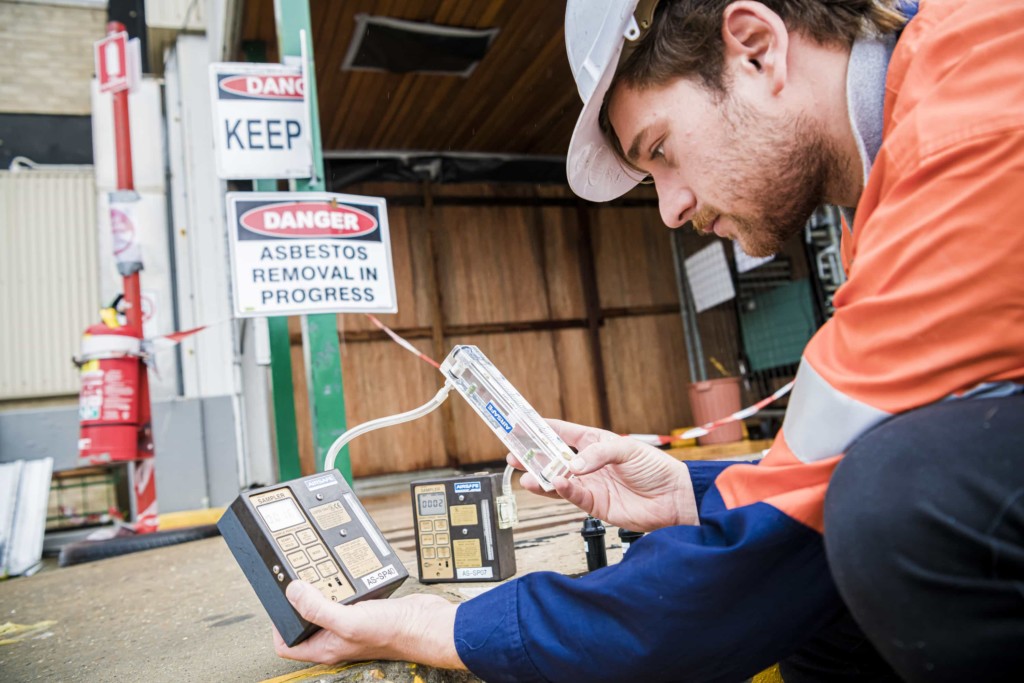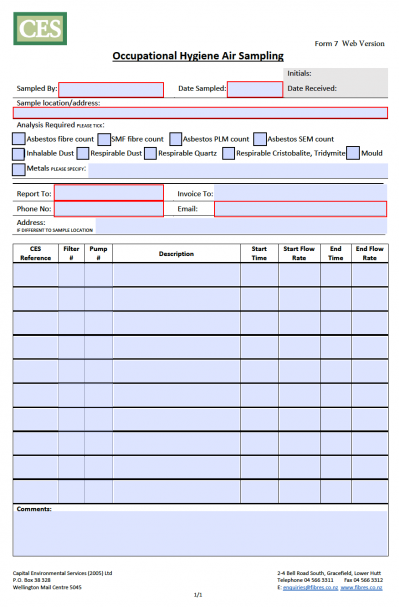Your Overview to Effective Asbestos Examining Procedures
Asbestos screening treatments are an important component of ensuring the safety of indoor environments, especially in older buildings where this unsafe material may be existing. The potential health and wellness threats associated with asbestos exposure make it vital to come close to testing with precision and thoroughness.
Comprehending Asbestos and Its Threats
Asbestos, a naturally occurring mineral understood for its warm resistance and durability, presents serious health and wellness threats when its fibers are breathed in or ingested. asbestos inspection. Direct exposure to asbestos can bring about serious health conditions such as lung mesothelioma cancer, cancer cells, and asbestosis. Despite its helpful buildings, asbestos has actually been commonly banned in several nations as a result of the tested link between asbestos exposure and these life-threatening diseases
The threat hinges on the tiny fibers that can quickly end up being air-borne when asbestos-containing materials are disturbed or damaged. As soon as breathed in, these fibers can end up being lodged in the lungs, causing swelling and scarring with time. The latency duration between exposure to asbestos and the growth of associated diseases can extend numerous decades, making early discovery and prevention vital.
Asbestos was frequently used in construction materials, insulation, and auto components before its wellness threats were fully understood. Today, correct testing and removal of asbestos-containing products are vital to secure individuals from the threats related to asbestos exposure.
Identifying Potential Asbestos Products
The recognition of potential asbestos materials is a critical step in guaranteeing the safety and security of individuals subjected to harmful substances in various atmospheres. Asbestos can be located in a wide array of structure materials, consisting of yet not restricted to insulation, ceiling tiles, flooring tiles, cement sheets, and roof tiles - Asbestos Air Sampling. Determining these products precisely is essential to effectively managing the dangers connected with asbestos direct exposure

In cases where aesthetic inspection is undetermined, examples of thought products can be collected and sent out to recognized laboratories for screening. These laboratories use specialized techniques such as polarized light microscopy or transmission electron microscopy to precisely determine the existence of asbestos fibers in the examples. By complying with strenuous identification treatments, individuals can properly alleviate the risks associated with asbestos exposure.
Picking the Right Testing Technique
Recognition of potential asbestos materials plays an important function in determining the proper screening method for precise asbestos fiber discovery. Once presumed materials have actually been determined, choosing the appropriate testing approach is vital to make certain dependable outcomes. There are two key methods for asbestos testing: polarized light microscopy (PLM) and transmission electron microscopy (TEM) PLM is frequently made use of for first screening as it is affordable and supplies fast outcomes. PLM has constraints in detecting asbestos fibers that are smaller than 1 to 3 microns. On the other hand, TEM is a much more sophisticated strategy that can properly determine asbestos fibers at the ultrastructural level. While TEM is a lot more taxing and pricey than PLM, it supplies greater level of sensitivity and specificity in asbestos detection. Choosing the suitable testing approach depends on various variables such as the kind of material being evaluated, the required sensitivity of the analysis, and the readily available spending plan. It is important more helpful hints to consult with recognized asbestos screening experts to figure out the most suitable method for your specific testing requirements.
Performing Example Collection Safely
When accumulating samples for asbestos screening, focusing on safety actions is vital to reduce potential direct exposure risks. Asbestos fibers are unsafe when disturbed, making it vital to follow proper safety and security procedures throughout sample collection - testing asbestos near me. Prior to beginning the sampling process, ensure that you are equipped with personal protective equipment (PPE) such as disposable coveralls, masks, goggles, and gloves to avoid breathing or contact with asbestos fibers
It is necessary to wet the tasting location using a gentle haze of water to avoid the fibers from ending up being air-borne during collection. Usage care when collecting examples and prevent hostile scraping or piercing that can release asbestos fibers into the air. Instead, very carefully reduced a tiny item of the material using suitable devices and position it right into a secured container for analysis by a licensed laboratory.
Additionally, identifying each example with thorough information relating to the tasting location, collection agency, and date's name is essential for accurate record-keeping and evaluation. By adhering to these safety and security standards, you can carry out sample collection for asbestos screening properly while decreasing the threat of exposure.
Translating Test Results and Following Actions

Verdict
Finally, reliable asbestos screening procedures are necessary in recognizing and taking care of possible health dangers related to asbestos exposure. By comprehending the dangers of asbestos, determining prospective materials, picking the appropriate testing method, carrying out example collection safely, and translating examination results accurately, individuals and companies can take the needed actions to safeguard themselves and others from the unsafe effects of asbestos. It is vital to focus on safety and appropriate screening protocols to make certain a healthy and balanced environment for all.

Identification of potential asbestos materials plays an important function in identifying the suitable testing technique for precise asbestos fiber detection. The article source examination outcomes will certainly suggest the presence or lack of asbestos, the kind of asbestos fibers existing, and the concentration degrees.In verdict, efficient asbestos screening procedures are important in identifying and taking care of prospective health threats connected with asbestos exposure. By understanding the threats of asbestos, determining potential products, selecting the right screening technique, conducting example collection safely, and analyzing test results accurately, individuals and companies can take the needed steps to secure themselves and others from the damaging effects of asbestos.